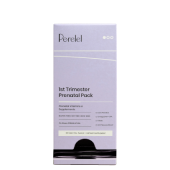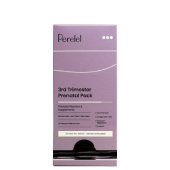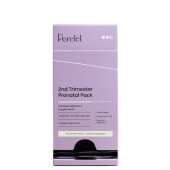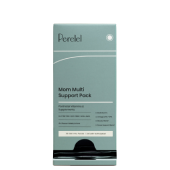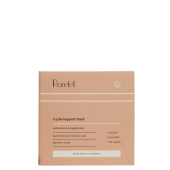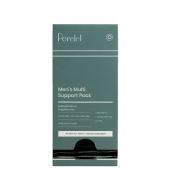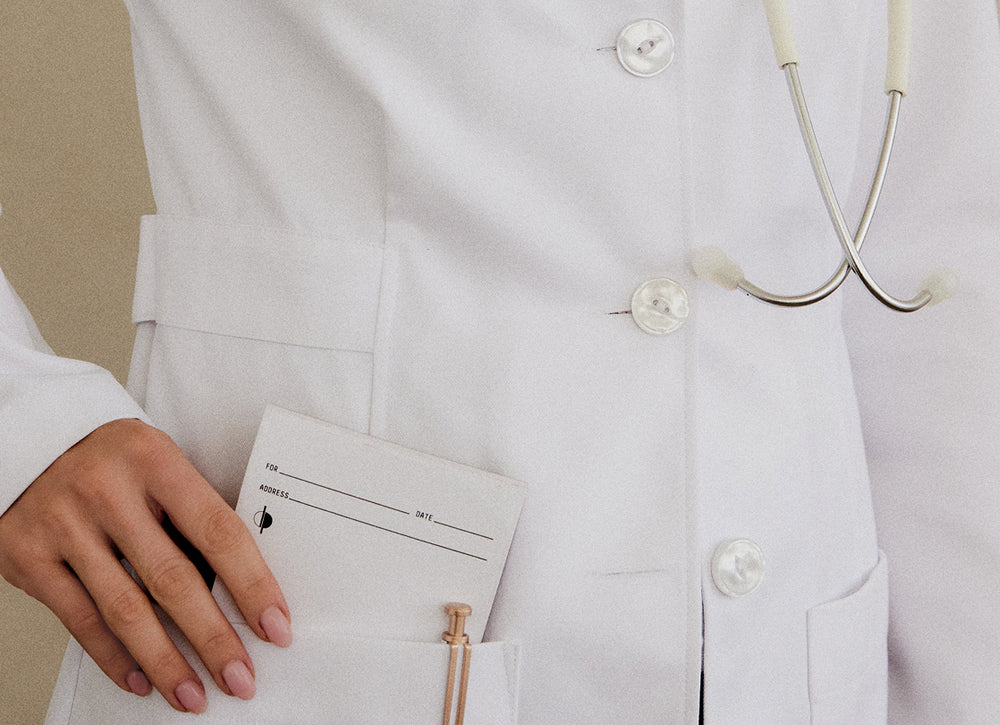For many women, pelvic pain and heavy periods are waved off as “just part of life.” But for some, the underlying cause is a lesser-known condition called adenomyosis—a disorder that’s often underdiagnosed, sometimes mistaken for endometriosis, and can deeply affect quality of life.
To shed light on this complex condition, we consulted Perelel's Medical Co-Founder Dr. Banafsheh Bayati, MD, OB/GYN, FACOG who answered the most common questions about adenomyosis: what it is, how it’s diagnosed, and what treatment looks like.
$40.59
$46.95
$58.95
Shop the Article:

Cycle Support Pack
Shop Now
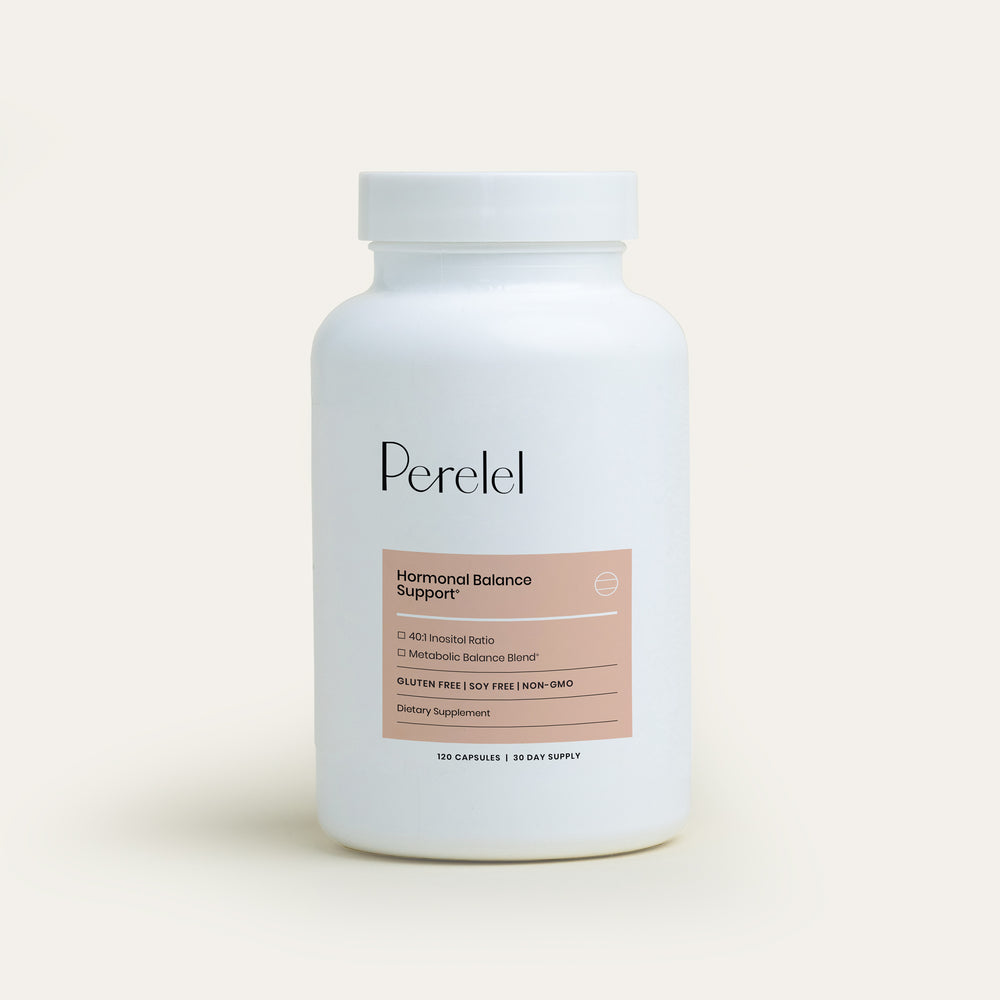
Hormonal Balance Support*
/ Month
Shop Now

Perimenopause Support Pack
/ Month
Shop Now
What is adenomyosis and how is it different from endometriosis?
Adenomyosis is a condition where endometrial tissue (the same type that lines your uterus) grows into the muscular wall of the uterus itself. This can lead to an enlarged, tender uterus and heavy, painful periods.
While both adenomyosis and endometriosis involve endometrial-like tissue growing where it doesn’t belong, here’s the key difference:
-
Adenomyosis: Tissue grows within the muscle wall of the uterus.
-
Endometriosis: Tissue grows outside the uterus—on the ovaries, fallopian tubes, bowel, or pelvic lining.
They can occur together, but they’re distinct conditions with different diagnostic and treatment paths.
What are the symptoms of adenomyosis?
Symptoms can vary, but common ones include:
-
Heavy or prolonged periods
-
Severe menstrual cramps (dysmenorrhea)
-
Pelvic pain or pressure
-
Pain during intercourse
-
Bloating or a feeling of fullness in the lower abdomen
-
Fatigue, especially during your period
Not everyone with adenomyosis has symptoms—some people only learn they have it through imaging or surgery.
Can adenomyosis cause cramps between periods?
Yes. Cramping between periods can occur due to ongoing inflammation or small bleeds within the uterine muscle. Unlike typical period cramps, this discomfort can feel more constant or sharp, and may flare up mid-cycle, especially as estrogen levels fluctuate.
How is adenomyosis diagnosed and treated?
Diagnosis can be tricky. Doctors may use:
-
Pelvic ultrasound (transvaginal)
-
MRI (more detailed)
-
Physical exam (can detect an enlarged, tender uterus)
-
Definitive diagnosis used to only be possible after hysterectomy, but imaging is now quite accurate.
Treatment depends on severity and goals (e.g., fertility):
-
Hormonal therapies (e.g., IUDs, birth control pills, GnRH analogs)
-
Anti-inflammatory meds (NSAIDs) for pain
-
Endometrial ablation (not ideal if you want to preserve fertility)
-
Hysterectomy is the only cure, but reserved for severe cases or after other treatments fail
Does adenomyosis get worse with age?
It can. Symptoms often peak in your 40s, especially as estrogen remains high but progesterone drops in perimenopause. However, many people experience relief after menopause, when hormone levels decline. That said, every case is unique—some feel relief with early intervention, while others may need more aggressive treatment later on.
Living with adenomyosis
While adenomyosis can be life-disrupting, it’s important to know that relief is possible. Early diagnosis, individualized treatment, and supportive care can make a significant difference.
Lifestyle strategies—like anti-inflammatory nutrition, stress reduction, and regular movement—won’t cure adenomyosis, but they may help manage symptoms alongside medical treatment. Support groups and advocacy organizations can also provide resources and community.
The Bottom Line
Adenomyosis is more common than once believed, but it remains underdiagnosed and misunderstood. Heavy bleeding, severe cramps, or pelvic pain shouldn’t be dismissed as “normal.”
By consulting experts like Dr. Bayati and advocating for more accurate diagnosis, women can access the care they deserve—whether that’s symptom relief, fertility support, or long-term management.
At Perelel, we believe knowledge is power. Understanding adenomyosis not only validates your experience but also empowers you to take the next step in seeking answers and solutions.
References:
-
García-Solares, J., Donnez, J., Donnez, O., Dolmans, M.-M. (2018). Pathogenesis of adenomyosis: an update. Fertility and Sterility. https://www.fertstert.org/article/S0015-0282(18)30006-2/fulltext
-
Vercellini, P., Consonni, D., Dridi, D., Bracco, B., Frattaruolo, M. P., Somigliana, E. (2017). Uterine adenomyosis and in vitro fertilization outcome: a systematic review and meta-analysis. Reproductive BioMedicine Online.https://www.rbmojournal.com/article/S1472-6483(17)30296-1/fulltext
This article is for informational purposes only. It is not, nor is it intended to be, a substitute for professional medical advice, diagnosis, or treatment and we recommend that you always consult with your healthcare provider. To the extent that this article features the advice of physicians or medical practitioners, the views expressed are the views of the cited expert and do not necessarily represent the views of Perelel.











